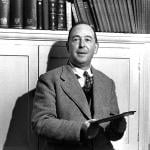The news actually broke this summer, when Japanese researcher Shinya Yamanaka announced that he had found a technique to transform cultured mouse skin cells into cells nearly identical to embryonic stem cells. As Nature magazine pointed out, if something similar works in humans, a simple skin biopsy could be used to create embryonic stem-cell equivalents “without using embryos or even eggs.”Jody Bottum reports in the online Wall Street Journal on a breakthrough in stem cell research. The whole article is available at: www.opinionjournal.com/federation/feature/?id=110010915
Here are a few paragraphs:
Stem cell research “has bubbled up again with the report from London’s Daily Telegraph that Ian Wilmut, the cloner of Dolly the sheep and the world’s most famous biological researcher, is abandoning cloning. Instead, he’s chosen to follow Mr. Yamanaka’s lead: ‘a way,’ as the Telegraph explained, ‘to create human embryo stem cells without the need for human eggs, which are in extremely short supply, and without the need to create and destroy human cloned embryos, which is bitterly opposed by the prolife movement.’
“Mr. Yamanaka’s research has received at least one confirmation from an American team, and though the technical details of his ‘de-differentiation’ method are not yet completely clear, the first reports are very promising.
“Certainly more promising than cloning. A report in Nature—much-ballyhooed by the press—announced the confirmation by an Australian team of the successful cloning of monkey embryos for the creation of embryonic stem cells. But the reported success rate was just 0.07%, and the Japanese technique for de-differentiating fully formed adult cells back down to embryonic stem cells has already shown itself to work at a much, much higher rate.
“In other words, scientists may now be able to have the embryonic stem cells we’ve been told they need for research—without creating and destroying embryos to get them. If so, the argument is over.”











